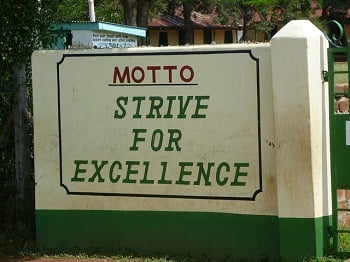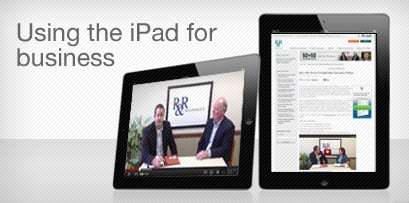
This is a guest blog post by David Weinhaus, author of the Inbound Agency Selling blog and a member of my Agency Account Management team @HubSpot.
Recently I offered to review an email sent by BayCreative, an Inbound Marketing Agency in the Bay Area, to introduce a new service to a former client. The email was representative of many I’ve seen agencies use when doing so. Below, with the agency's permission, I’ve shared the email along with some thoughts and recommendations for turning what is not a bad email, but one with a low chance of success, into one that can gain significantly better results.
Read the email below and put yourself in the shoes of the recipient, a business owner who has done business with the agency in the past. (Note that actual identifying prospect information has been modified.)
The Agency Email
"Hi Bob,
Our agency is offering a set of new lead generation-oriented services that I thought Smith Enterprises would greatly benefit from learning more about.
These services can enable Smith Enterprise to leverage an end-to-end marketing program for generating more qualified leads and reducing the sales cycle. It delivers visibility to the performance of all your search engine marketing, SEO, email marketing, blogging, social media, website visits, and landing pages. And, it centralizes and tracks performance and activity so you can rapidly measure the return on your investments, identify where tweaks to campaigns should be made, and nurture prospects until their ready to make a buying decision.
Are you available at 3pm Monday or Tuesday week to speak with me about lead generation? I'll come prepared to offer some suggestions based on what we’ve identified from your website, as well as a competitive analysis.
I look forward to hearing from you.
Best
Name of individual from agency"
Business Owners Skim
Here are my first impressions.
I read the first paragraph, skimmed the entirely of the second paragraph, and read the third paragraph. I did this on instinct, but it happens to align with the value in the email.
The first paragraph is good because it describes exactly why the agency is writing. "Our agency is offering a set of new lead generation-oriented services that I thought Smith Enterprises would greatly benefit from learning more about."
The third paragraph is valuable because it describes exactly what the agency is requesting and what they are offering. "Are you available at 3pm Monday or Tuesday week to speak with me about lead generation? I'll come prepared to offer some suggestions based on what we’ve identified from your website, as well as a competitive analysis."
Keep the Focus on the Prospect
However, the second paragraph does not deliver in the same way. In it, the agency succumbs to the temptation to make the agency and the service offering the focus. Rather than attempting to identify the goals and challenges of the prospect, it suggests a laundry list of services, relying on the prospect to attach those services to some meaningful objectives of the business. Most of the time, business owners won't make that connection themselves.
5 Tips For Improving Your Email's Success Rate
If there is a good relationship and a compelling need, this email might be good enough to get the job done. It is professional and clearly conveys the offer. However, in my experience, the odds are low.
There are a few things that can significantly improve the odds. Here they are - in order of increasing importance.
1. Make it Topical and Current
If you can, relate with something current and topical in the business. It shows you are paying attention and that you care. It also shows that you can connect the dots between what is going on in the business and what your agency has to offer.
Here is an example:
<<Hey Joe,
Congrats on your recent recognition in the Springfield Business Journal about Smith Enterprise's excellent customer service. I know that you have created a company culture where excellent customer service is rewarded. It is great to see that you are being rewarded for it too!">>
2. Use a Positioning Statement
Turn around the second paragraph of the email above by using a positioning statement. Mark Gibson of Advanced Marketing Concepts has a great article about this: Positioning Statement - Best New Sales Technique of the Year.
A positioning statement is all about identifying the problem - not presenting a solution. At the early stages of the sales process, this has a much higher chance of resonating than does a solution.
Here is an example:
<<Lately, we've been working with clients who are frustrated that they're not getting more prospects finding them online. When we started working with them, their exact words were, "We do an amazing job for our clients. They love us. Our customer service and product quality is second to none. We're just not getting people finding us." >>
3. Include a Clear Call to Action
The example agency letter does a pretty good job of ending with a call to action. Here is another example. Both leave no doubt as to what is being requested. It may also be just a style thing, but I prefer not pressing for a specific time in an introductory email if they haven't agreed that they have a problem. I like the more open ended "Is this something that you'd be interested in speaking about?"
If it's an existing or previous client where there's a solid relationship, I'd also suggest just asking them if they'd like to catch up and discuss how things are going.
Tips 4 & 5 don’t relate directly to the email, but to activities that will help the overall success. They are every bit as important.
4. Don't Send it Until You've Left a Voice Mail
At Hubspot, we don't send a prospect email without first picking up the phone. You want to actually speak to your prospect right? Nothing says that less than an email attempt without a phone call. The purpose of the call is not just the hope of a live connection. It is also to add emphasis and importance to attempted connection.
You will be tempted to dismiss this. DON'T. Compose an email in draft, make the call, and if you don't get through leave a voice mail. Then, and only then, hit send on your email. Conveniently enough, the email you have composed ahead of time will make a great script for your voicemail if you need it.
5. Plan on a Sequence of Calls/Emails
At Hubspot, when prospecting, we make 8 touches, including 4 calls, and 4 emails before giving up. The sequence typically goes something like this.
Business Day 1 - voice mail/email #1
Business Day 3 - voice mail/email #2
Business Day 6 - voice mail/email #3
Business Day 10 - final voice mail/email
Even more important than the content of each email and voice mail is the cadence you are establishing. Through your actions you are showing you care about connecting (far more than if you were to send one email and call it a day) and that you have something valuable to offer. As far as the content, make each attempt emphasize a different point of value. For instance, at Hubspot, for our second attempt we frequently reference a company's Marketing Grader score, and offer to review the results with them.
Summary
So now you've seen my 5 recommendations to get better results from emails when introducing a new agency service. To see an example email putting it together, check out - A Sample Email for Introducing New Agency Services.
What other successful techniques have you found?
Photo Credit: RambergMediaImages



 Are you looking for creative ways to
Are you looking for creative ways to 